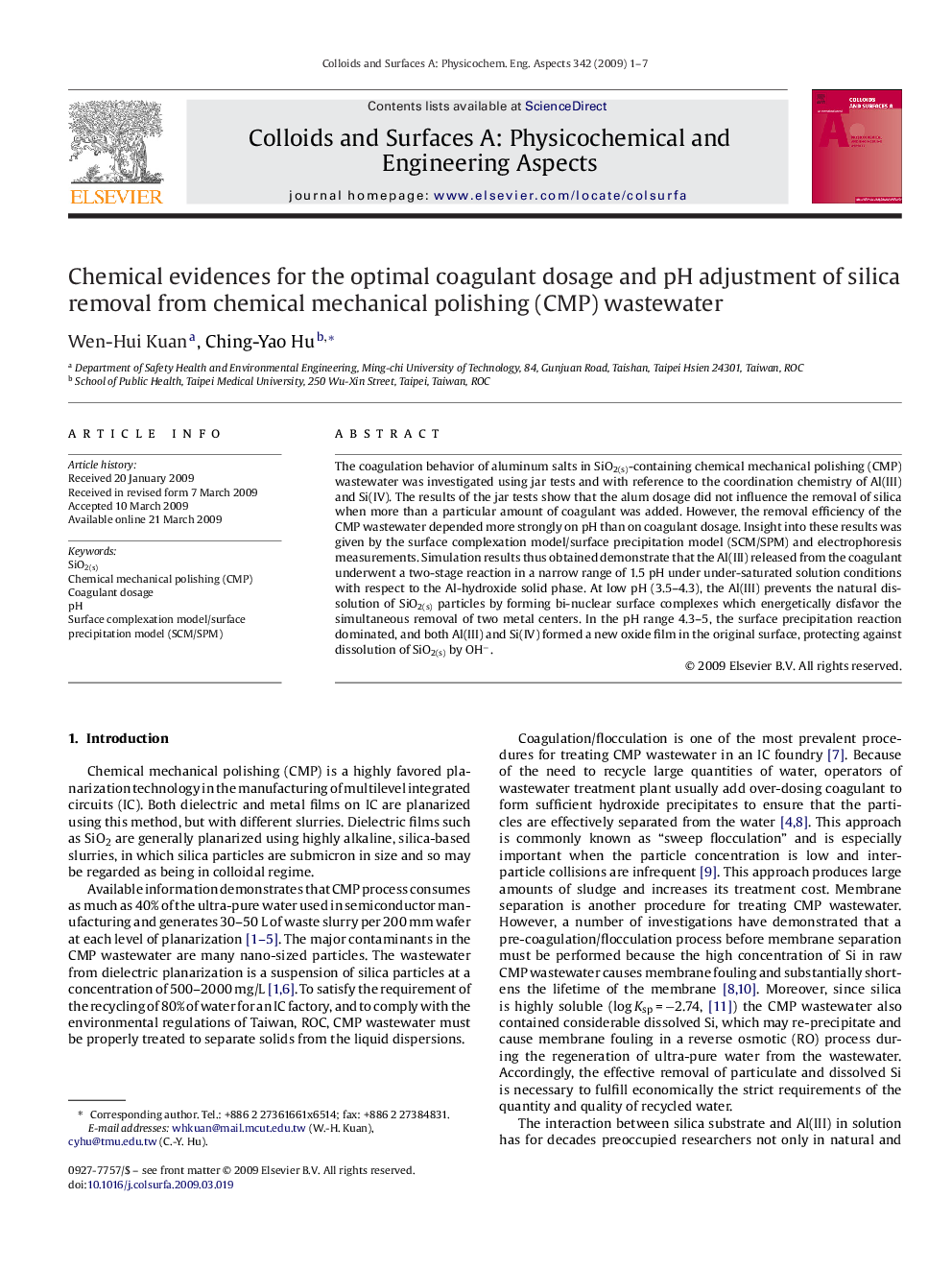| Article ID | Journal | Published Year | Pages | File Type |
|---|---|---|---|---|
| 595948 | Colloids and Surfaces A: Physicochemical and Engineering Aspects | 2009 | 7 Pages |
Abstract
The coagulation behavior of aluminum salts in SiO2(s)-containing chemical mechanical polishing (CMP) wastewater was investigated using jar tests and with reference to the coordination chemistry of Al(III) and Si(IV). The results of the jar tests show that the alum dosage did not influence the removal of silica when more than a particular amount of coagulant was added. However, the removal efficiency of the CMP wastewater depended more strongly on pH than on coagulant dosage. Insight into these results was given by the surface complexation model/surface precipitation model (SCM/SPM) and electrophoresis measurements. Simulation results thus obtained demonstrate that the Al(III) released from the coagulant underwent a two-stage reaction in a narrow range of 1.5 pH under under-saturated solution conditions with respect to the Al-hydroxide solid phase. At low pH (3.5-4.3), the Al(III) prevents the natural dissolution of SiO2(s) particles by forming bi-nuclear surface complexes which energetically disfavor the simultaneous removal of two metal centers. In the pH range 4.3-5, the surface precipitation reaction dominated, and both Al(III) and Si(IV) formed a new oxide film in the original surface, protecting against dissolution of SiO2(s) by OHâ.
Related Topics
Physical Sciences and Engineering
Chemical Engineering
Colloid and Surface Chemistry
Authors
Wen-Hui Kuan, Ching-Yao Hu,
